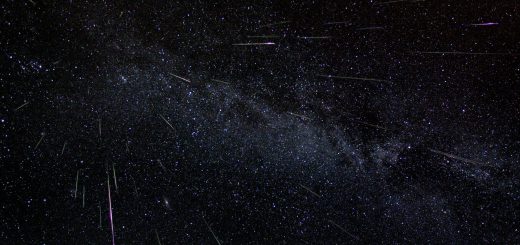Did You See the Super Blue Blood Moon?
On January 31st, at around 7 am in Ontario, there was a partial lunar eclipse happening behind the snow clouds.
Sadly, for all of us living in Ontario, we didn’t get to see the full eclipse. It started just before the Moon sets over the western horizon, while the Sun rose in the East.
For those who live on the West coast, or across the Pacific Ocean, they got a stunning view of a total lunar eclipse. The full eclipse lasted about 5 hours.
This eclipse isn’t just any lunar eclipse. It’s known as a Super Blue Blood Moon. It is a supermoon, a Blue Moon, and a Blood Moon (colloquial term for a total lunar eclipse). So, what is a Blue Moon? What is a total lunar eclipse? And why is it known as a Blood Moon?
What is a supermoon?
Since the Moon’s orbit is an ellipse, and not a perfect circle, we get what’s known as a supermoon when a Full Moon is near or at its closest distance (its perigee) from Earth.
What is a Blue Moon?
There are two definitions for a Blue Moon, and none of them has to do with the Moon’s colour.
Traditionally, when the Moon was heavily relied upon to tell the passing of time, people knew there would usually be 3 full moons per season. But there are times when there are 4, so the 3rd out of the 4 would be called a Blue Moon.
More recently, however, another definition has arisen, where the 2nd full moon within a calendar month is known as a Blue Moon.
What is a lunar eclipse?
A lunar eclipse is when the Moon passes through the Earth’s shadow. Depending on the Moon’s path across the Earth’s umbra (full shadow), or penumbra (partial shadow), we can witness one of three types of lunar eclipses: total, partial, or penumbral.
A total lunar eclipse is when the Moon is completely covered by the Earth’s umbra. When this happens, not only does the Moon grow dark, but it gets a reddish hue.
A partial lunar eclipse is when the Moon only gets partially covered by the umbra.
A penumbral lunar eclipse is when the Moon only passes through the Earth’s penumbra, or partial shadow.
Why is the Moon red?
During a total lunar eclipse, when the Moon is completely covered by the Earth’s shadow, it gets a reddish hue, which is why it is known as a Blood Moon.
This is a really neat phenomenon. When sunlight passes through the Earth’s atmosphere, it refracts, splitting into the colours of the rainbow. Red, having the longest wavelength compared to the other colours, is the only colour shining towards the Moon when it’s hiding in the Earth’s shadow, as portrayed in the picture below. It’s only during a total lunar eclipse that only the red light will get reflected off of the Moon, making it look red.
And there you have it, some fun facts about this lunar eclipse. On the upside, we won’t have to wait too long for the next total lunar eclipse, which we’ll get to see next year, on the night of January 20th/21st, 2019.



